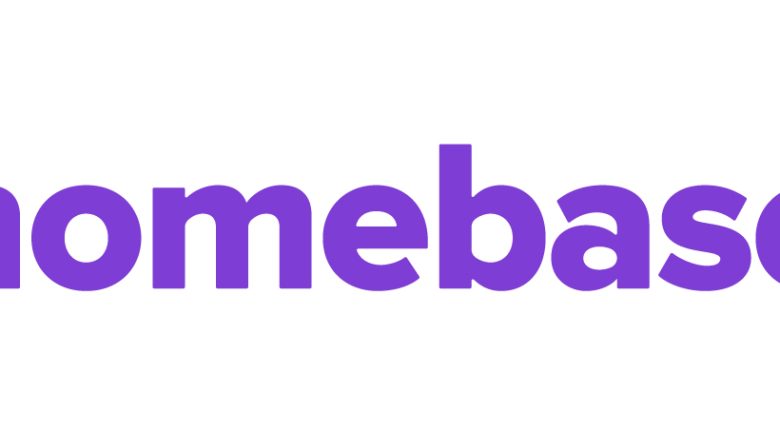But here’s the thing – and I’m speaking from experience here – AI isn’t some fancy tech reserved for Silicon Valley giants anymore. AI for small businesses is now accessible, affordable, and specifically designed to help small operations compete and thrive. Last month, I helped a local plumber in my area automate his customer service, and his response time went from 6 hours to 6 minutes. The guy was skeptical at first (aren’t we all?), but now he’s booking 40% more jobs.
So if you’re a local business owner wondering how AI can actually help your bottom line without breaking the bank or requiring a computer science degree, stick around. I’m going to break this down in plain English.
Introduction to AI for Local Businesses
Artificial intelligence (AI) is no longer just a buzzword reserved for tech giants—it’s quickly becoming a must-have for local businesses looking to thrive in today’s competitive market. As a small business owner, you’re probably juggling countless tasks every day, from managing staff to keeping customers happy. This is where AI technology steps in to make your life easier. By embracing AI tools, you can automate repetitive tasks, reduce operational costs, and boost employee productivity, all while delivering better customer experiences.
The rapidly evolving landscape of AI technologies means there are more options than ever for small businesses to streamline business operations. Whether it’s automating appointment reminders, optimizing inventory, or personalizing customer interactions, artificial intelligence AI can help you focus on what matters most—growing your business and serving your community. In this section, we’ll break down the basics of AI for local businesses and show you how these powerful tools can empower you to work smarter, not harder. You can always find talent to DFY on platforms like Legiit
Why Local Businesses Need AI (And Why You’re Already Behind If You’re Not Using It)
Let me start with some real talk. Your competitors are probably already using AI, whether they realize it or not. That scheduling app they use? AI. Their chatbot that answers basic questions? AI. Even their Google Ads optimization? Yep, AI.
The local business space is getting more competitive every year. I’ve watched too many good businesses struggle because they couldn’t keep up with customer expectations for instant responses and 24/7 availability.
But here’s what most people don’t understand about AI for local business – it’s not about replacing your human touch (that’s your biggest advantage). It’s about freeing you up to do more of what you do best while handling the repetitive stuff automatically. Local businesses should embrace AI as a positive step to improve efficiency and stay competitive.
Understanding AI Tools: What’s Out There and What’s Right for You
With so many AI tools on the market, it can feel overwhelming to figure out which ones are right for your small business. The good news is, there’s something for everyone—no matter your industry or technical know-how. As a small business owner, you’ll find AI-powered solutions designed to handle everything from customer relationship management (CRM) to natural language processing (NLP) for smarter customer interactions.
For example, CRM platforms use AI to help you keep track of customer needs and preferences, while NLP tools can analyze and respond to customer inquiries in real time. If you’re looking to boost your social media presence, there are AI tools that can generate engaging social media posts and even schedule them for you. Don’t overlook free AI tools like Google Docs, which now offer smart suggestions and content generation features to help you manage large volumes of information more efficiently.
When choosing the right AI tool, consider your specific business needs, the features offered, pricing, and how well the tool integrates with your current systems. The best AI solutions are those that fit seamlessly into your workflow and help you save time, improve customer interactions, and grow your business without adding unnecessary complexity.
Customer Service That Never Sleeps: AI Powered Chatbots
Okay, let’s start with the obvious one – customer service. And no, I’m not talking about those terrible chatbots that make everyone want to throw their phone across the room.
Modern AI can handle real customer inquiries. I’m talking about answering questions about your hours, scheduling appointments, providing quotes for standard services, and even handling basic troubleshooting.
Here’s what this looks like in practice:
A customer visits your website at 11 PM (because that’s when they remember they need a freelancer for their project). Instead of waiting until you check your messages the next morning, they can get immediate answers about your services, pricing, and availability. The AI can even schedule a consultation for the next day.
The result? You capture leads that would have gone to your competitor who happened to be awake at 11 PM.
I set this up for a local HVAC company, and they saw a 60% increase in after-hours lead capture. The AI wasn’t replacing their technicians – it was just making sure they didn’t lose potential customers to timing. AI tools can also enhance the overall customer experience by providing real-time assistance and personalized support, making every interaction smoother and more efficient.
Smart Scheduling and Appointment Management
If you’re still playing phone tag to schedule appointments, you’re wasting hours every week. AI-powered scheduling tools can handle the back-and-forth, find the best times for both parties, and even send automatic reminders.
But it goes deeper than that. Smart scheduling AI can:
Optimize your calendar to minimize travel time between appointments
Automatically reschedule when cancellations happen
Block out time for specific types of work
Handle seasonal booking patterns
These tools can also boost efficiency by automating scheduling tasks and minimizing manual errors, allowing you to focus on more important aspects of your business.
I helped a local landscaping business implement this, and the owner told me it felt like getting an extra day back every week. No more double bookings, no more missed appointments because someone forgot to write it down.
Inventory Management and Supply Management
This one’s huge for tradies and retail businesses. AI can predict when you’re going to run out of materials based on your project schedule and historical usage patterns.
Instead of either running out of supplies mid-job or having thousands of dollars tied up in excess inventory, AI helps you order just what you need, when you need it.
A local electrician I worked with was constantly either emergency-ordering parts (expensive) or having too much stock sitting around (also expensive). After implementing AI inventory management, his material costs dropped by 15% and he never had another job delay due to missing parts. AI also helped streamline his business processes by automating inventory tracking and supply management, making his operations more efficient.
Marketing That Actually Works for Local Business
Here’s where AI gets really interesting for local businesses. It can analyze your customer data to figure out who your best customers are and find more people just like them. AI-powered business solutions can help streamline marketing efforts and drive growth for local businesses.
Targeted Local Advertising
AI can help you create ads that speak directly to your ideal customers in your specific area. It analyzes local search patterns, competitor activity, and customer behavior to optimize your ad spend.
Instead of throwing money at broad Facebook ads hoping something sticks, AI helps you target the homeowner who just moved into your service area and is actively searching for your type of service. Using a marketing hub can further centralize and streamline your local advertising campaigns, making it easier to track metrics and manage cross-channel efforts for better results.
Content Creation and Social Media
Now, I know what you’re thinking – “I don’t have time for social media.” But what if creating content took 5 minutes instead of 50?
AI can help generate social media posts, respond to customer reviews, and even create basic marketing materials. You provide the business knowledge and personality, AI handles the heavy lifting. AI generated content can rapidly produce marketing and blog content, but it should always be reviewed to maintain originality and brand voice.
A local restaurant owner I know uses AI to create daily social media posts about their specials. It takes her 10 minutes to review and post instead of spending an hour trying to think of what to write.
Generative AI Applications: Unlocking New Possibilities
Generative AI is changing the game for small businesses by making it easier than ever to create high-quality content and automate everyday workflows. With generative AI technologies, you can quickly produce marketing content like blog posts, social media posts, and product descriptions—freeing up valuable time for other important tasks. These AI-powered tools can help you maintain a consistent online presence and engage your audience, even if you don’t have a dedicated marketing team.
But generative AI isn’t just about content creation. AI-powered chatbots can provide instant customer support around the clock, answering questions and resolving issues without the need for human intervention. This not only boosts efficiency but also ensures your customers enjoy enhanced experiences every time they interact with your business.
By embracing generative AI, small businesses can automate workflows, stay competitive in a rapidly evolving landscape, and deliver the kind of customer support that keeps people coming back. Whether you’re looking to streamline your marketing efforts or improve customer service, generative AI offers practical solutions to help your business grow.
Financial Management and Insights
This is probably the most underutilized application of AI in local business. AI can analyze your financial patterns and give you insights that would take an accountant hours to calculate. With AI-powered data analysis, complex accounting tasks like cash flow forecasting and fraud detection can be automated, saving time and reducing operational costs.
Things like:
Which services are most profitable (not just highest revenue)
Seasonal patterns in your cash flow
Early warning signs of financial problems
Opportunities to increase prices without losing customers
I worked with a local auto shop that discovered through AI analysis that their oil changes were actually losing them money when you factored in all costs. They adjusted their pricing strategy and increased profit margins by 12%.
Getting Started Without Breaking the Bank
Look, you don’t need to invest in some custom AI system that costs more than your annual revenue. Start small and build up. Many AI tools offer a free version with basic features, so you can experiment and see what works for you before committing to a paid plan.
Phase 1: Basic Automation
Start with simple tools that handle one specific problem. Maybe it’s a chatbot for your website or automated appointment reminders. Pick the thing that wastes most of your time and automate that first. Make sure you choose the right tools that fit your business needs and are easy to implement.
Phase 2: Integrate and Expand
Once you’re comfortable with basic automation, start connecting your tools. Let your scheduling system talk to your inventory management. Connect your customer service AI to your booking system. As your business grows, find solutions that are adaptable and easy to integrate, so you can expand your AI usage without major disruptions.
Phase 3: Advanced Analytics
This is where you start using AI for business intelligence. Analyzing customer patterns, optimizing operations, and making data-driven decisions about your business strategy. AI-driven tools can further support decision-making by providing tailored recommendations and reducing manual effort.
Tools That Actually Work for Local Businesses
I’m not going to recommend specific brands (they change too fast anyway), but here are the types of AI tools that make sense for most local businesses: Small business AI tools can improve customer experiences, enable predictive analytics, and help businesses stay ahead of technological trends.
Customer Communication: Look for platforms that can handle text, email, and phone inquiries through one interface. The AI should be able to escalate complex issues to humans seamlessly.
Scheduling: Find tools that integrate with your existing calendar and can handle the specific needs of your business (travel time, equipment requirements, etc.).
Marketing: Platforms that can manage your local listings, create content, and run targeted advertising campaigns.
Analytics: Tools that can pull data from multiple sources (your POS system, website analytics, social media) and give you actionable insights.
Overcoming Challenges in AI Adoption
Adopting AI can feel daunting, especially for small businesses with limited resources or technical expertise. One of the biggest concerns is keeping sensitive data secure, as AI software often needs access to customer information to function effectively. It’s important to choose AI-powered tools and solutions that prioritize data security and offer clear privacy controls.
Another common challenge is figuring out where to start. If you’re new to AI, begin by automating repetitive tasks like data entry or appointment scheduling. These simple changes can free up time and help you get comfortable with AI usage before moving on to more complex tasks like content creation or predictive analytics. Look for AI solutions with user-friendly interfaces and strong customer support to help you integrate them into your current processes smoothly.
Remember, you don’t need to become a tech expert overnight. Start small, focus on the areas where AI offers the most immediate benefits, and gradually expand your use of AI-powered tools as your confidence grows. This approach will help you overcome obstacles and unlock the full potential of artificial intelligence for your business.
Measuring AI Success: How to Know It’s Working
Once you’ve started using AI technologies in your business, it’s important to measure their impact to ensure you’re getting real value. Track key performance indicators (KPIs) like customer satisfaction, employee productivity, and operational costs to see how AI-powered tools are affecting your bottom line. For example, you might notice faster response times, fewer errors, or increased revenue as a result of your AI solutions.
AI-driven solutions can also provide deep insights into customer behavior, preferences, and needs, helping you tailor your marketing efforts and create more personalized customer experiences. By regularly reviewing these metrics, you can make data-driven decisions to optimize your AI strategy and gain a competitive advantage in the rapidly evolving landscape of small business.
Ultimately, the goal is to use AI to reduce operational costs, improve efficiency, and drive growth. By keeping a close eye on the results and adjusting your approach as needed, you’ll ensure that your investment in AI continues to pay off—empowering your small business to thrive now and in the future.
The Human Element Still Matters
Here’s what I want to make crystal clear – AI doesn’t replace the personal relationships that make local businesses successful. AI solutions are designed to replicate aspects of human intelligence, supporting business operations and decision-making, so owners can focus on providing personal service. It just gives you more time and energy to focus on those relationships.
Your customers still want to work with real people. They want to trust you, feel heard, and know you care about their specific situation. AI just makes sure you can be available when they need you and that you’re not bogged down with administrative tasks.
I’ve seen local businesses thrive by using AI to handle the routine stuff while doubling down on personal service for everything else. The combination is powerful.
Common Mistakes to Avoid
Don’t try to automate everything at once. I’ve seen business owners get overwhelmed trying to implement too many AI tools simultaneously. Pick one area, get it working smoothly, then expand.
Don’t choose AI tools that don’t integrate with your existing systems. If your new scheduling AI can’t talk to your accounting software, you’re creating more work, not less.
And please, don’t use AI for anything customer-facing without testing it thoroughly first. A bad chatbot experience can damage your reputation faster than no chatbot at all. It’s also important to be aware of potential security risks when implementing new AI tools, as they may expose vulnerabilities or fail to detect irregularities and fraud in your accounting data.
What’s Next for AI and Local Business
The technology is moving fast, but the basic principles will stay the same. AI will continue getting better at handling routine tasks, analyzing data, and helping small businesses compete with larger companies. Adopting AI now can open up new growth opportunities, such as entering new markets and increasing revenue.
The local businesses that start experimenting with AI now will have a significant advantage in the next few years. Not because the technology will make them superhuman, but because they’ll understand how to use it effectively while their competitors are still figuring out the basics.
Taking Action
If you’re ready to start using AI in your local business, begin with the area that causes you the most daily frustration. Small business owners can especially benefit from AI adoption to boost productivity and enhance customer support. For most business owners, that’s either customer communication, scheduling, or marketing.
Don’t wait for the perfect solution – start with good enough and improve as you go. The biggest mistake is doing nothing because you’re waiting for certainty in an uncertain field.
And remember, implementing AI in your business isn’t about becoming a tech company. It’s about using technology to become better at what you already do well.




